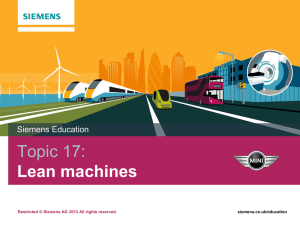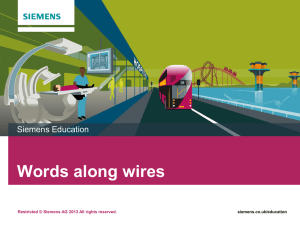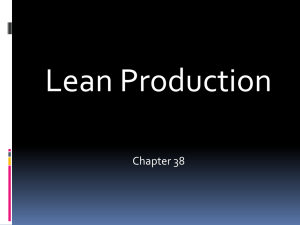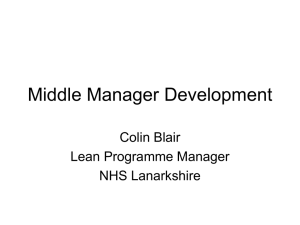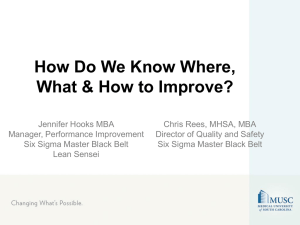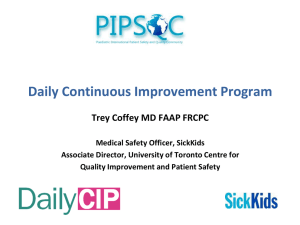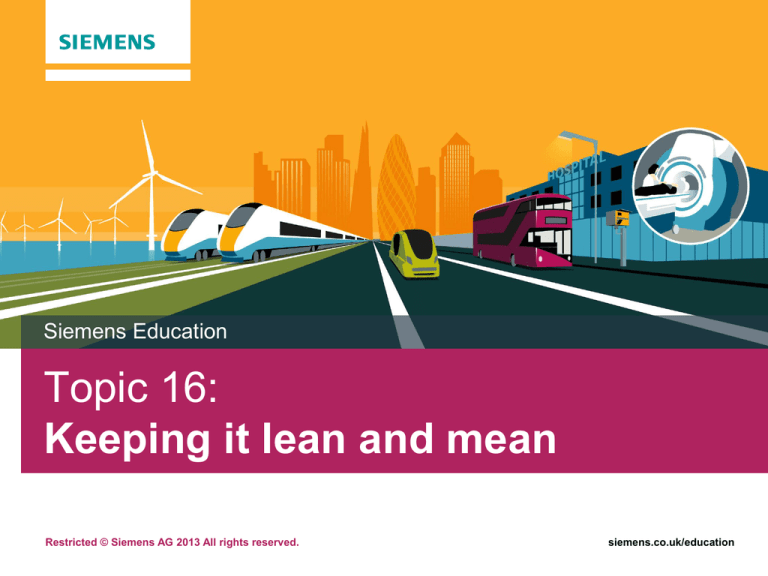
Siemens Education
Topic 16:
Keeping it lean and mean
Restricted © Siemens AG 2013 All rights reserved.
siemens.co.uk/education
Keeping it lean and mean
Overall learning objectives:
• Explore the characteristics of a production system and how to make it more
efficient
• Understand the principles of “Lean” and “Just in Time” production principles
• Apply their understanding to a context
Restricted © Siemens AG 2013 All rights reserved.
Keeping it lean and mean
What needs to happen in a typical domestic kitchen?
Function:
Cleaning & Washing
Function:
Food preparation
Function:
Cooking
Restricted © Siemens AG 2013 All rights reserved.
Keeping it lean and mean
How would you set out a kitchen to group functions in the same area?
• Cooker
• Fridge
• Dishwasher
• Food waste and composting bin
• Knife block
• Cooking utensil drawer
• Cupboard for ingredients
• Sink and draining board
• Work surface with chopping board
• Crocker storage cupboard
Restricted © Siemens AG 2013 All rights reserved.
Keeping it lean and mean
Cooker
Fridge
Dishwasher
Storage for
knives and
cooking
utensils
Cupboard
for
ingredients
Sink and
draining
board
Work
surface with
chopping
board
Floor plan of kitchen: option A
Restricted © Siemens AG 2013 All rights reserved.
Crockery
storage
Keeping it lean and mean
Cooker
Cupboard for
ingredients
Dishwasher
Crockery
storage
Storage for
knives and
cooking
utensils
Sink and
draining
board
Work
surface with
chopping
board
Floor plan of kitchen: option B
Restricted © Siemens AG 2013 All rights reserved.
Fridge
Keeping it lean and mean
Sink and
draining
board
Fridge
Dishwasher
Cooker
Cupboard for
ingredients
Storage for
knives and
cooking
utensils
Work
surface with
chopping
board
Floor plan of kitchen: option C
Restricted © Siemens AG 2013 All rights reserved.
Crockery
storage
Keeping it lean and mean
Promotional torch
Restricted © Siemens AG 2013 All rights reserved.
Keeping it lean and mean
Assembling torches
Processes in the assembly sequence (in no particular order):
• Inserting batteries
• Screwing battery cover on
• Inserting bulb
• Screwing bulb cover on
• Putting adhesive label on the side
Now devise:
• Three assembly sequences that would work
• Three assembly sequences that wouldn’t work
• From the three that would work, why one might be slightly better than the
others
Restricted © Siemens AG 2013 All rights reserved.
Keeping it lean and mean
Three organisational models
1. Each student has a supply of all the components and assembles complete
torches
2. Students are arranged in a row and each undertakes one stage in the
assembly process, e.g. the first might put the batteries in the body, then
passes it to the second, who screws the battery lid on, etc
3. Students are arranged in small teams, each of whom perform a sub-
assembly. The part assembled torches are then stored temporarily before
going on to the next sub-assembly. For example, the first sub-assembly
might be the batteries going in and the lid being screwed on. The part
assembled torches then await the next sub-assembly, such as the label being
applied
Restricted © Siemens AG 2013 All rights reserved.
Keeping it lean and mean
Lean manufacturing
• Lean manufacturing is an approach to the management of production which
uses the concept of “added value” for the customer to be the prime
determinant for assessing the use of resources.
• In other words, every stage and every use of time, skill or materials should be
assessed in terms of whether it makes the product more valuable to the
customer.
Restricted © Siemens AG 2013 All rights reserved.
Keeping it lean and mean
Just in Time production
• The “Just in Time” (JIT) approach to production aims to reduce the stock of
components held by a manufacturer. The aim is to have the material needed
arrive at the right time in the right place
• This eliminates holding stocks that have been bought in, in advance, and
need storage.
Restricted © Siemens AG 2013 All rights reserved.

